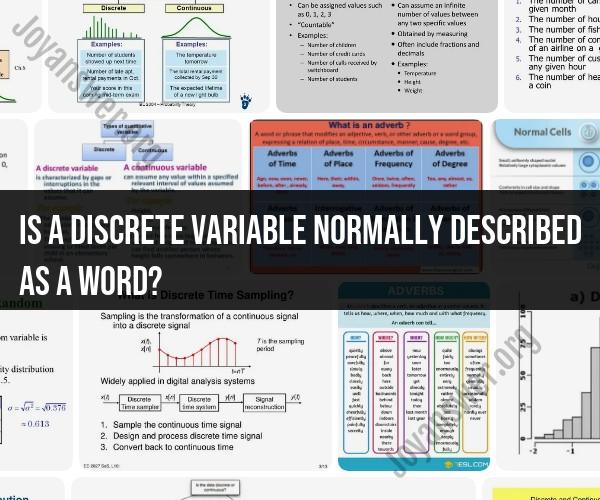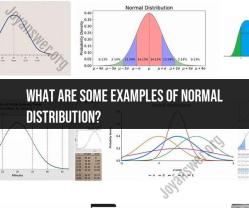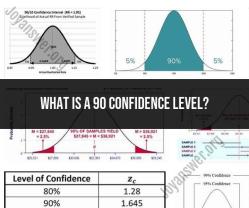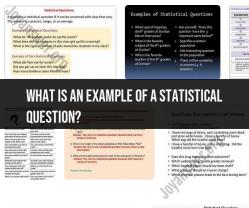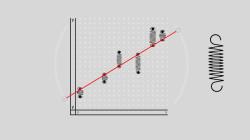Is a discrete variable normally described as a word?
Discrete variables are an essential concept in statistics and data analysis. They are distinct from continuous variables and play a significant role in various fields, from mathematics to social sciences. Let's dive deeper into the world of discrete variables:
Characteristics of Discrete Variables
Discrete variables possess several defining characteristics:
- Countable Values: Discrete variables take on distinct and countable values. These values are often whole numbers and represent separate categories or units.
- Discontinuity: There are gaps or intervals between each possible value of a discrete variable. Unlike continuous variables, which have infinite possibilities within a range, discrete variables have finite and separate data points.
- No Intermediate Values: Discrete variables do not have intermediate values. For example, if a variable represents the number of cars, you can't have 2.5 cars; it must be a whole number.
Examples of Discrete Variables
Discrete variables can be found in various contexts:
- Number of Children: The count of children in a family is a discrete variable. It can only take on whole numbers (0, 1, 2, ...).
- Roll of a Die: The outcome of rolling a fair six-sided die is a discrete variable. The possible values are 1, 2, 3, 4, 5, and 6.
- Customer Count: The number of customers entering a store in a day is a discrete variable. It cannot have fractional values.
- Defect Count: In manufacturing, the count of defective items in a batch is a discrete variable. It involves whole numbers and can't have intermediate values.
Importance of Discrete Variables
Discrete variables play a crucial role in data analysis and decision-making:
- Counting and Frequencies: Discrete variables are often used to represent counts, frequencies, and occurrences of events or categories.
- Probability and Statistics: Discrete variables are fundamental in probability theory and statistics, influencing concepts like probability distributions and hypothesis testing.
- Decision-Making: In fields such as business and economics, discrete variables help in making informed decisions based on discrete outcomes.
Conclusion
Discrete variables are a foundational concept in data analysis, with distinct characteristics that set them apart from continuous variables. Their countable nature, lack of intermediate values, and role in representing categorical data make them invaluable in various disciplines. Understanding and analyzing discrete variables contribute to informed decision-making, accurate modeling, and meaningful insights in both academic and real-world contexts.
